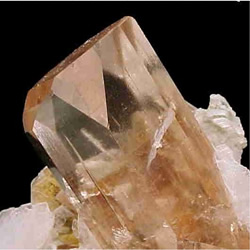|
Bond
dissociation energy, DE, is
the amount of energy needed to break a covalent bond.
The bond formation energy is the amount of energy released when a covalent bond is formed. These energies
are different for each combination of bonds. The weakest bonds have the smallest values. The numbers here are in kilocalories per
mol and kilojoules per mol. The smaller the bond energy the more reactive and weaker the bond.
Notice the high bond energy, 945 kjoules per mol, for the nitrogen triple bond in N2. The bond energy for oxygen, O2 , is 496 kjoules per mol which is almost half of the nitrogen bond energy.
Nitrogen does
not react as readily as oxygen, O2. Oxygen has a bond energy that is almost
half the nitrogen bond energy. The high bond dissociation energy for nitrogen is one reason why it is the dominant gas in our atmosphere.

|
On the other hand the relatively low bond dissociation energy for oxygen is one reason why so many minerals are combinations of metals and oxygen. Oxygen atoms form a bond with metals easily. We can see this when magnesium and oxygen react
An example is topaz Al2SiO4F2 (OH)2 which is 43% oxygen. Another is the mineral gypsum CaSO4• 2 H2O which is 55.76 % oxygen. click to see more mineral data
|
|